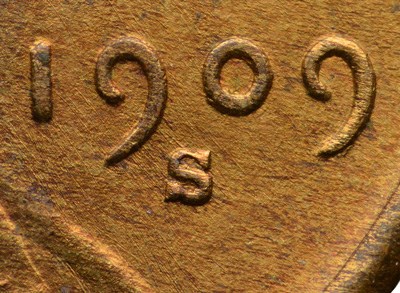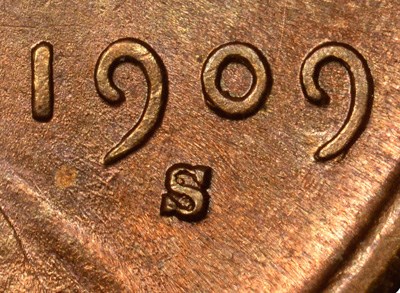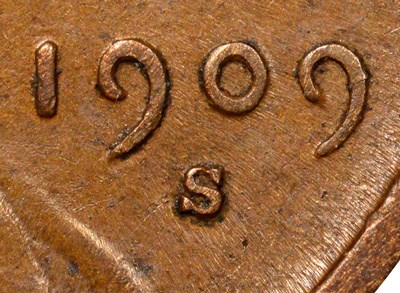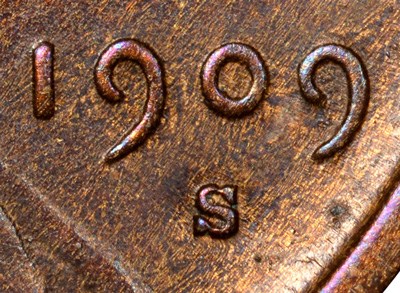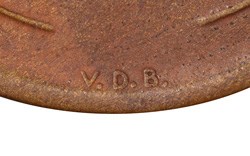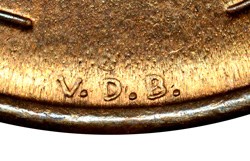Counterfeit Detection: Authenticating 1909-S VDB Lincoln Cents
Posted on 4/12/2016
The 1909-S VDB Lincoln Cent is one of the most famous United States coins. Its status as a first year issue, its relatively low mintage of 484,000 pieces, and the interesting story of the “V.D.B.” initials combine to make the 1909-S VDB a particularly popular coin.
The desirability of the 1909-S VDB makes it the most commonly altered and counterfeited collectible coin in the world. For a counterfeiter, the addition of a simple, small design element (an “S” mintmark) can create a substantial profit of hundreds, if not thousands of dollars.
For those looking to buy a 1909-S VDB, it is vitally important that you know what a genuine example should look like. A little-known fact is that just one “S” mintmark punch was used on all San Francisco Lincoln cent issues from 1909 to 1916. If you’re familiar with the “S” mintmark on these coins you are well on your way to being able to differentiate the genuine 1909-S VDB Cents from the fakes.
As you can see in the above images, the mintmark on the genuine example has a small raised dot inside of the top curve of the “S” (circled in red) while the mintmark on the added “S” piece does not display this feature. This dot is a common characteristic seen in the mintmarks on all 1909-1916 “S” Lincoln Cents and is a great first step in authenticating a 1909-S VDB. The notch is very well defined on this particular example, but it is often not as strong on others, so the lack of this dot is, by itself, not a reason to condemn a coin as counterfeit. It is also important to pay close attention to the serifs on the “S” – they should be straight as opposed to slanted at the bottom like on the example at the left.
Another great authentication tool is the location of the mintmark relative to the date. In 1909, mintmarks were still being hand-punched into the die at the Philadelphia Mint before the dies were shipped to the branch mints. As a result, the position of the mintmark can vary from die to die. Researchers have determined that only four obverse dies were used to strike 1909-S VDB Cents, each with a slightly different mintmark placement.
Below are images of the four different mintmark placements on genuine 1909-S VDB Cents. Note how the mintmark placement moves down and to the right from the first die to the fourth die. If you are able to match the mintmark position of a 1909-S VDB to one of the four below, you can be more confident in its authenticity. The positions are as follows:
The next step in authenticating a 1909-S VDB is an examination of the designer’s initials. Victor David Brenner placed his initials prominently at 6 o’ clock on the reverse of the Lincoln cent, which angered some who felt it was too ostentatious. After many complaints were received by the Mint, the initials were removed. They would not be reinstated until 1918, when they were placed on the bottom of Lincoln’s shoulder. This decision is what created the rarity of this issue.
On genuine 1909-S VDB Cents, the VDB has a distinct look. The biggest problem with the VDB on many altered coins is the lack of a slant in the cross bar on the “B” as well as the bottom of the “D.”
In the images below, the crossbar of the “B” and the base of the “D” are flat on the left coin, which is altered, while they are angled on the right coin, which is genuine. The authentic piece also has some strike doubling on the letters of VDB, which would likely not be seen on coins where the VDB was added.
Finally, it is important to note that outright counterfeits are also a problem with the 1909-S VDB Cent. These are coins that are not altered from genuine examples but are entirely spurious. If the forger uses a genuine 1909-S VDB as the “host” coin for a die-transfer counterfeit, then it is possible that the fake will have all of the markers noted above.
Hopefully this article has helped to explain some of the steps taken by NGC’s graders to authenticate 1909-S VDB cents. Altered and counterfeit examples are quite common so be careful, and if there is any doubt you can trust that an NGC-certified example is guaranteed to not only be genuine, but also accurately graded.
Interested in reading more articles on Counterfeit Detection? Click here.
Stay Informed
Want news like this delivered to your inbox once a month? Subscribe to the free NGC eNewsletter today!
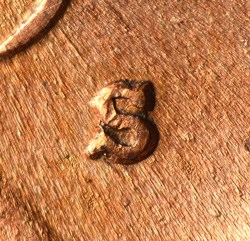
_sm.jpg)
